# Type at least 1 character to search # Hit enter to search or ESC to close
Hand Block Printing
Block printing is a printing technique that uses a solid material to transfer ink into fabric. The block printing process involves engraving a design on the material, known as the block, inking the design, and then using the block as a stamp on the fabric. The resulting design will be a mirror image of the one on the block. The block may be a piece of wood, plastic, or any other suitable material. No machines are used to do block printing
Shop by Craft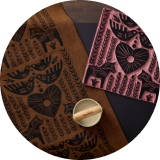
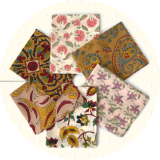
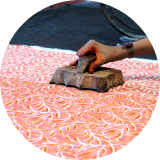
Peace Silk Cultivation
Peace Silk, also known as non-violent or Ahimsa silk, refers to a humane method of silk production. This process allows silkworms to complete their transformation into butterflies, ensuring that no harm or death occurs to create fabrics, clothing, or bedding. This particular method slows down production, but is fundamental to our philosophy of non-violently manufacturing silk. Produced in India, Peace Silk adheres to the highest social and environmental standards .
Shop by Craft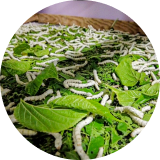
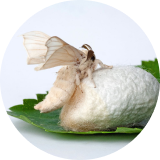
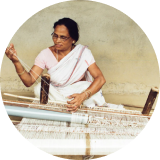
Handloom Weaving
At WEAVE STORIES, we take pride in showcasing the exquisite craft of handloom weaving from different parts of India. This traditional art form is renowned for its intricate designs and vibrant patterns, reflecting the rich cultural heritage of the country. India's handloom weaving is not just a craft but a way of life for many local artisans who have honed their skills over generations. Using eco-friendly materials and sustainable practices, our artisans create stunning sarees, stoles, and home textiles that embody the spirit and beauty of Indian craftsmanship. By choosing our products, you support these skilled weavers, help preserve the planet and this timeless tradition
Shop by Craft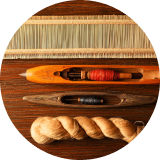

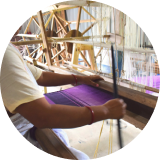
Organic Colour Dyeing
We use natural organic dyes in our products, derived from plants, minerals, and other natural sources, ensuring that our fabrics are free from harmful chemicals and safe for both you and the environment. From the plant and its leaves to the paste and the vat, the outside light, the fabric, the number of baths, and the oxidation time, there are so many variables in this process that it would be impossible to reproduce exactly the same color. This, we believe, is the beauty and mystery of organic dyes, which is reflected in our products. By choosing our products, you contribute to the preservation of traditional dyeing techniques
Shop by Craft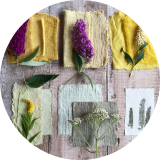
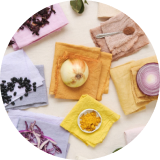
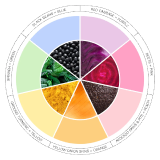
Tye & Dye Craft
Tie-dyeing involves a variety of techniques such as stitching, folding, twisting, pleating, or crumpling fabric or garments, then binding them with string, rubber bands, or clamps before applying dye. The bound areas resist the dye, retaining the fabric's original color. Factors such as the thickness of the yarn and the tightness of the bindings influence how much dye is absorbed or resisted. This method allows for the creation of unique designs by blending multiple colors and shades, showcasing the versatility and creativity inherent in this craft.
Shop by Craft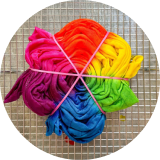
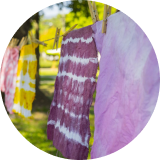
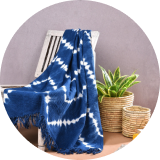
Hand Embroidery
Hand embroidery, an art form hailing from ancient times, has recently woven itself into the fabric of the fashion and home décor industry, making a significant impact on modern culture. Merging history, craftsmanship, and fashion, this revived craft yields a spectrum of designs as varied as their originating cultures. At Weave Stories, every embroidered item obtains a unique identity because each piece is produced as a single copy, thus embracing slow fashion. Embroidery has empowered women economically, offering income in environments that often exclude them from other opportunities.
Shop by Craft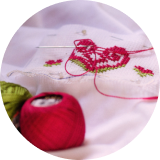
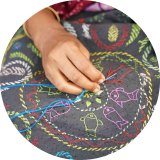
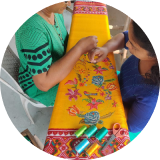
Water Hyacinth Crafts
At the heart of this weaving techniques lies water hyacinth, an aquatic plant known for its invasive nature. By harnessing this ecological challenge, artisans transform it into a canvas for their creative expressions. Water hyacinth not only lends strength to the weaves but also offers a rustic and natural aesthetic. Its sustainable properties make it an ideal choice for eco-conscious crafting. Creating exquisite baskets, trays, mats and bags from water hyacinth isn't just about crafting art; it's also about ensuring the longevity of these pieces while remaining eco-conscious.
Shop by Craft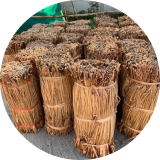
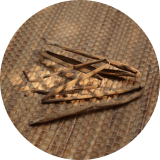

Bamboo Weaving
In rural Indian culture, bamboo weaving is intricately linked with food storage and home décor. Traditional bamboo items are skillfully woven using time-honored techniques to create sturdy, breathable material. Artistry starts with selecting bamboo based on thickness, flexibility, and maturity. Bamboo stalks are split into thin strips, known as splints, then woven together to form bags, baskets, or lampshades. Weavers use various techniques like twining, plaiting, or coiling to create patterns, adding beauty and functionality.
Shop by Craft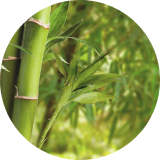

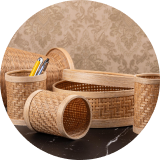
Banana Fiber Crafts
Banana fiber crafts showcase sustainable artistry, utilizing fibers extracted from banana plant stems. Renowned for their strength, eco-friendliness, and silky texture, these crafts blend tradition with innovation, creating exquisite handmade products like textiles, bags, and decor, reflecting nature's elegance.
Shop by Craft

